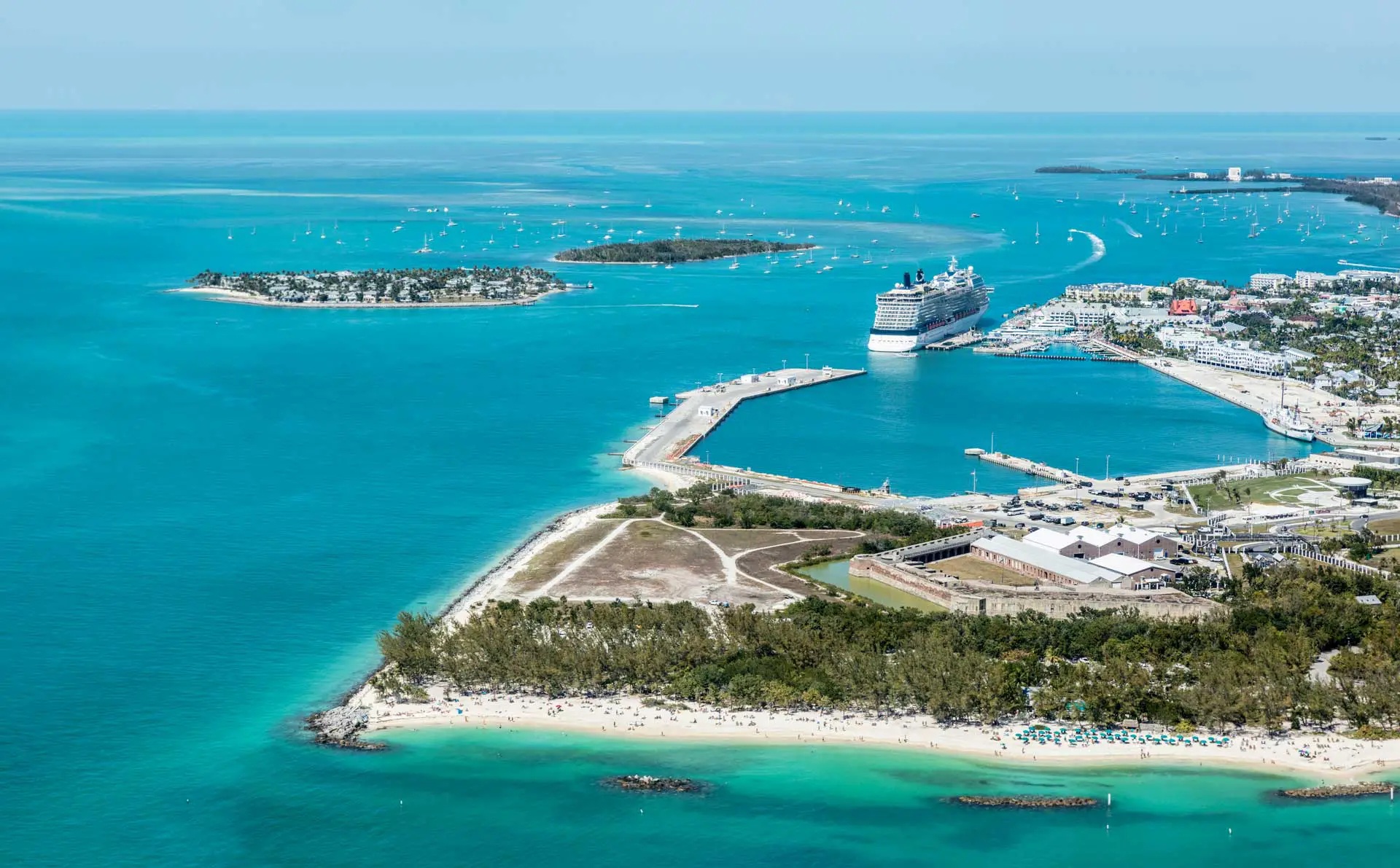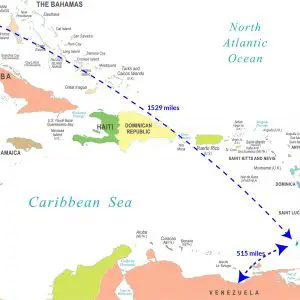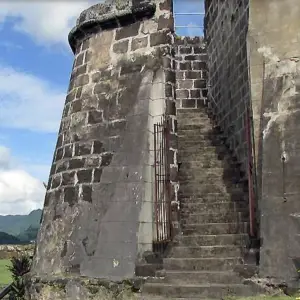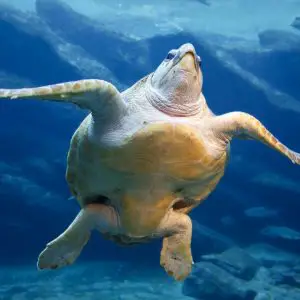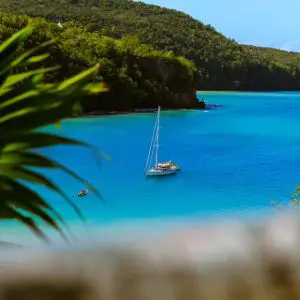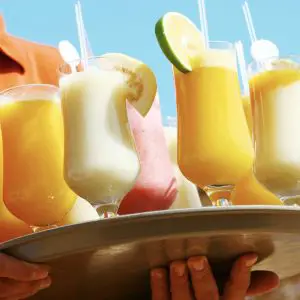The Caribbean is dotted with thousands of islands and keys (or cays). But what’s the difference between an island and a key? Is an island the same as a key? Are they used interchangeably? Inquiry minds want to know, and so did I. So I delved into it and found the answer.
Islands and keys are related but different. A key is a type of island called “coral”. There are five different types of islands including coral, continental, tectonic, volcanic, and barrier. Coral islands are a built-up of tiny sea animals that built up over time and eventually broke the surface of the ocean.
While researching the difference between an island and a key I came across some fascinating information about island formation. I’m sure I learned this stuff back in middle school but apparently wasn’t very interested then. In addition to the detailed differences between an island and a key, I’d like to share a bit about island formation. You will be amazed!
What exactly is an island?
Island: a tract of land surrounded by water and smaller than a continent – Merriam Webster Dictionary
Scientists think millions of years ago there was one continent that broke off over time into other continents (larger pieces) and islands.
Continental Islands
So, many islands are “continental”, meaning they were formed by breaking off a continent. They essentially rest on a continental shelf, the solid earth below the land and sloping down to the ocean.
It might interest you to know that larger bodies of land are called continents, not islands. In fact, did you know Australia is a continent, not an island (surprised me!).
On the other hand, Greenland is an island. In fact, it’s the largest island and about 1/3 the size of Australia – a continent.
Cuba is an example of a continental island, formed from having broken off North America.
Tectonic Islands
Tectonic islands formed islands are created as a result of material build-up from the earth’s plates scraping against one another. When the plates bump into one another, one pushes on top and soil, rocks and other materials get scraped and piled up to the point where they form a landmass. It takes millions of years for enough buildup to form an island.
Barbados is one of the Lesser Antilles island groups thought to have formed tectonically as well as via coral build-up which we’ll discuss in a bit.
Volcanic Islands
Other islands formed as a result of ocean volcanoes erupting. They’re called “volcanic” or sometimes referred to as “oceanic” islands. These islands are high due to the magma, ash and other debris building up into a mountain formation.
Aruba is an example of an island formed from an underwater volcano.
Barrier Islands
Barrier islands are comprised of sediment (sand, silt, and gravel).
None of the Caribbean Islands are barrier islands but I bet you’ve heard of The Outerbanks in North Carolina or Padre Island in Texas! They are both barrier islands.
By the way, have you ever wondered why the Caribbean Sea is so blue? I did too! So I dove into the science and wrote Why the Caribbean Water is so Blue.
Coral Islands
Coral: the calcareous or horny skeletal deposit produced by anthozoan or rarely hydrozoan polyps – Merriam Webster Dictionary
Coral islands, such as ‘Keys” are low, flat islands composed mostly of coral reef. Coral reefs are limestone formations composed of tiny sea organisms and their remains they leave behind when they die.
Coral growth thrives in warm, shallow water.
What exactly is a key?
As mentioned, a key is an island. Specifically, it’s an island formed through the build-up of coral. The island IS a coral reef.
To expand further, a key is a small, low [elevation] island on sand or coral. Since coral growth thrives in warm, shallow water, keys are in fact low islands.
Of course, keys are found in warm tropical regions. They are usually sandy and often surrounded by mangroves (groups of shrubs and trees that grow along the coast).
Popular keys are The Florida Keys and the Great Barrier Reef off of Australia. Since the Florida Keys are in the Caribbean, let’s explore them further.
The Florida Keys
Perhaps the most famous keys in the world, certainly to Americans, are the Florida Keys. The Florida Keys are made up of over 1700 islands off the southern coast of Florida. Since coral reefs are home to amazing sea life, they are a dream destination for scuba divers and snorkelers.
Key Information about The Florida Keys (Pun intended!)
| Island | Florida Keys |
| Airport | Key West International Airport (EYW) |
| Archipelago | Florida Keys |
| Best Beaches | Smathers Beach, Key West Calusa Beach, Big Pine Key Higgs Beach, Key West Far Beach, Key Largo Zachary Taylor State Park Beach, Key West Dry Tortuga National Park, Key West Harry Harris Park, Key Largo |
| Capital | Tallahassee (mainland Florida) |
| Cell Service & Internet | Standard US cell service |
| Climate | January: 67°-75° February: 68°-76° March: 70°-78° April: 74°-82° May: 77°-85° June: 80°-88° July: 81°-90° August: 81°-91° September: 80°-89° October: 78°-85° November: 72°-79° December: 70°-77° |
| Country | United States |
| Currency | US Dollar |
| Getting Around | Walking & Bicycles – Your best bet for getting around the islands Taxi, Uber, Bus, Pedi-cabs, Tour trains & Trolleys |
| Islands | 1700 islands Largest islands include: Key West Big Pine Key (lower keys) Marathon Islamorada Key Largo |
| Island Group | Florida Keys |
| Known for | Snorkeling, Diving Art & Culture |
| Language | English |
| Legal Alcohol Age | 21 |
| Official Website | https://fla-keys.com/ |
| Passport | No |
| Popular Attractions | Dry Tortugas National Park and Fort Jefferson Ferry Fort Zachary Taylor National Park, Key West Southernmost Point, Key West Ernest Hemingway’s Home & Museum, Key West John Pennekamp Coral Reef State Park, Key Largo Spiegel Grove, Key Largo |
| Safety | Travel Advisory 1 (same as US mainland) |
| Timezone | Atlantic Standard Time |
| US Ambassador | N/A |
Next, read: Why the Caribbean Water is so Blue.
What’s the difference between a Key and Cay or Caye?
Keys are also referred to as “cay”. Cay comes from the Spanish word cayo” which means small island. Sounds about right.
- 🎁【Portable for Apple Watch】Unique cordless charger for Apple Watch series, equipped with a 2.5W magnetic wireless iWatch charger compatible with Apple Watch Series 10/9/8/7/6/SE/5/4/3/2/1/UItra/UItra 2, no extra cables need and you can direclty charging for your iWatch. perfect for travel charging block.(wireless charger can’t charging for Samsung Watch)
- 🎁【Multi Port Fast Charger】Charging block with dual port fast charging, 20W USB-C port and 18W USB port, supports fast charge for mostly PD QC 3.0 protocol devices, you can quick charger for you new iPhone or Samsung phones to 60% battery in 30 mins. meets your daily charging needs.
- 🎁【Foldable Plug and Compact Design】USB C wall charger only 2.15* 1.69* 1.18 inch and 2.46 oz, 90 degrees foldable plug design, compact and lightwight small brick ,which is easy to carry without occupying space, and will not scratch your other items in bag. excellent charger for travel, business,office.
- 🎁【Wide Compatibility Travel Essentials】3-in-1 design, one-step charging for apple watch seies. and other dual port compatible with Phone16/15/14/13/Galaxy S24/S23/S22/S21/S10/S9/S8/Galaxy A51/52/53/54/55/Note 20/10, Google Pixel series, for Airpods, smartwatch. etc smart devices. perfect on the go travel accessories.
As an Amazon Associate, we earn from qualifying purchases.
